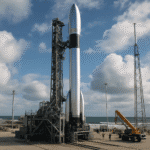Key Takeaways
- Uber’s free cash flow has expanded dramatically since early 2023, with the annualised run-rate now approaching $10 billion based on recent quarterly performance.
- Despite this surge in cash generation, the company’s valuation multiples, such as Enterprise Value to Free Cash Flow, have contracted, suggesting a disconnect between operational performance and market perception.
- Growth is supported by strong underlying metrics, including an 18% year-over-year rise in trips, a 60% increase in Uber One members to 36 million, and a new $20 billion share buyback programme.
- The valuation mismatch may be attributable to macroeconomic headwinds and lingering scepticism from Uber’s prior cash-burning era, creating a potential opportunity if the market re-rates the stock to align with its new financial profile.
Uber Technologies has transformed its financial profile dramatically since the dawn of 2023, with last twelve months free cash flow ballooning to levels that dwarf earlier figures. Yet this surge has coincided with a persistent squeeze on its valuation multiples, raising questions about market efficiency in pricing such progress.
The Surge in Trailing Free Cash Flow
Tracing back to early 2023, Uber’s free cash flow on a trailing basis stood at modest levels, but operational efficiencies and scaling effects have propelled it to nearly eight times that amount by mid-2025. This is not mere accounting sleight of hand; it is rooted in tangible improvements across the business. Quarterly reports reveal a pattern of accelerating cash generation, with gross bookings climbing steadily—up 18% year-over-year to $46.8 billion in the latest period—while adjusted EBITDA margins expanded by 60 basis points to support this cash influx. The trajectory, if sustained, positions Uber as a formidable cash machine in the platform economy.
| Period | Reported Free Cash Flow (USD) |
|---|---|
| 2020-2021 | Negative |
| Full Year 2022 | $390 Million |
| Full Year 2023 | $3.36 Billion |
| Full Year 2024 | $6.89 Billion |
| Q2 2025 (Standalone) | $2.5 Billion |
Valuation Multiples Under Pressure
Despite the free cash flow explosion, Uber’s enterprise value to free cash flow multiple has trended downward, a counterintuitive reward for what should be celebrated as a maturation story. At the start of 2023, with cash flow projections optimistic but unproven, the stock commanded a premium. Now, with tangible results, the multiple sits at a more modest level. This compression hints at investor scepticism, perhaps lingering from past losses or broader tech sector rotations, but it overlooks how free cash flow yields are improving to 5.5% on an annualised basis—a metric that could attract value-oriented buyers.
| Metric (as of 7 August 2025) | Value |
|---|---|
| Market Capitalisation | ~$189 Billion |
| Share Price | $90.35 |
| 52-Week High | $97.72 |
| Forward Price-to-Earnings Ratio | 38.3x |
| EV to FCF Multiple | ~35x |
Factors Contributing to the Mismatch
Several elements may explain why robust free cash flow growth has not translated into expanding multiples. Macroeconomic headwinds, including interest rate hikes through 2023 and 2024, have broadly punished growth stocks by elevating discount rates. Uber, despite its pivot to profitability, still carries echoes of its high-growth, high-burn past, leading some to question the sustainability of these cash flows. Yet, internal metrics counter this narrative: Uber One memberships have surged 60% to 36 million, driving three times the bookings from premium users and bolstering recurring revenue. Furthermore, operating cash flow in recent quarters has consistently outpaced expectations, funding initiatives like a new $20 billion share buyback programme that targets the repurchase of 12% of the company. The market’s reluctance appears more a function of crowded trades unwinding than fundamental flaws.
Potential Paths to Resolution
Discrepancies of this nature often resolve through re-rating, especially as evidence of sustainability mounts. Analyst forecasts project continued expansion, with some 2025 free cash flow estimates exceeding $9 billion. This could catalyse a multiple expansion if execution delivers, particularly as buybacks reduce shares outstanding and enhance per-share metrics. Historical parallels in tech platforms that transitioned from loss-makers to cash generators show multiples rebounding once free cash flow stability is proven. With trips reaching 3.3 billion in Q2 2025 (up 18% year-over-year) and adjusted EBITDA climbing 35% to $2.1 billion, the foundation is laid. The stock’s 17% rise over the past 200 days suggests tentative recognition, but full alignment with its free cash flow prowess could drive further upside.
Implications for Investors
Navigating this dynamic requires focusing on the core mismatch: explosive free cash flow against a backdrop of tempered valuations. While risks like regulatory hurdles in key markets persist, the data points to a company outgrowing its sceptics. Free cash flow margins have evolved from negative double-digits in 2019-2020 to 16% in 2024, a testament to operational leverage that multiples have yet to fully reward. Investors eyeing this setup might find the current pricing an entry point, anticipating that market recognition will eventually catch up to the cash flow reality, much as it has in past inflection stories.
Data as of 7 August 2025, drawn from Uber Technologies investor releases and analyst platforms like Alpha Spread and Seeking Alpha. Inspired by market discussions on X.
References
- AInvest. (2025, May). Uber free cash flow surge positions growth scale champion mobility golden age. Retrieved from ainvest.com
- Alpha Spread. (n.d.). Uber Technologies Inc. (UBER) Financials. Retrieved August 7, 2025, from alphaspread.com
- EconomyApp [@EconomyApp]. (2023, May 2). [Uber Q1 2023 Financials]. X. https://x.com/EconomyApp/status/1653368140166995973
- EconomyApp [@EconomyApp]. (2023, November 7). [Uber Q3 2023 Financials]. X. https://x.com/EconomyApp/status/1721899291248324642
- fiscal_ai [@fiscal_ai]. (2025, September 21). [Uber FCF Chart]. X. https://x.com/fiscal_ai/status/1906013509043032480
- KoyfinCharts [@KoyfinCharts]. (2024, August 6). [Uber TTM Free Cash Flow Chart]. X. https://x.com/KoyfinCharts/status/1842616000023577056
- Motley Fool via The Globe and Mail. (2025). 3 Strategic Growth Levers Powering Uber’s Next Chapter. Retrieved from theglobeandmail.com
- Seeking Alpha. (2025, August 7). Uber: Increased Profitability And Stronger Free Cash Flow Generation. Retrieved from seekingalpha.com
- StockMarketNerd [@StockMarketNerd]. (2023, June 26). [Uber Operating Cash Flow vs. Capex]. X. https://x.com/StockMarketNerd/status/1673387071397052416
- Taxi Point. (2025, August 7). Uber reports 18% rise in Q2 trips as cash flow hits record levels. Retrieved from taxi-point.co.uk
- Uber Technologies, Inc. (2024, May 8). Uber Announces Results for First Quarter 2024. https://investor.uber.com/news-events/news/press-release-details/2024/Uber-Announces-Results-for-First-Quarter-2024/default.aspx
- Uber Technologies, Inc. (2024, November 6). Uber Announces Results for Third Quarter 2024. https://investor.uber.com/news-events/news/press-release-details/2024/Uber-Announces-Results-for-Third-Quarter-2024/default.aspx
- Uber Technologies, Inc. (2025, February 7). Uber Announces Results for Fourth Quarter and Full Year 2024. https://investor.uber.com/news-events/news/press-release-details/2025/Uber-Announces-Results-for-Fourth-Quarter-and-Full-Year-2024/default.aspx
- Yahoo Finance. (2025, August 7). Uber Technologies, Inc. (UBER) Reports Q2 2025 Earnings. Retrieved from finance.yahoo.com














